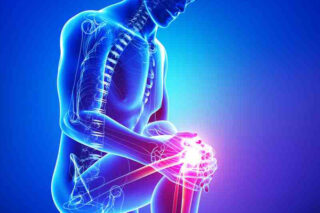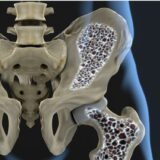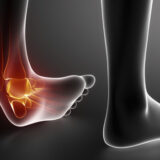- 3957/184, Gandhi Bhavan, KA, India
- info@shreeortho.in
- Mon - Sat 8:00 am - 10:00 pm | Sun - 8:00 am - 2:00 pm
- BOOK AN APPOINMENT
Specialities
Pulmonology
PULMONOLOGY
Welcome to our guide on pulmonology, the study of lung disease. Whether you’re interested in prevention, diagnosis, or treatment, our experts will help you understand complex information in an easy-to-digest format. Be sure to check out our resources and find a pulmonologist near you.
Introduction to Pulmonology
Pulmonology involves the study of the lungs and their diseases, including but not limited to asthma, COPD, lung cancer, and tuberculosis. Through research and clinical practice, pulmonologists help to better understand and manage respiratory diseases. Early detection is key, so be sure to consult a specialist if you experience any of the symptoms.

The Importance of Air Quality
The quality of the air we breathe has a significant impact on pulmonary health. Environmental factors such as pollution, smoking, and allergens can increase the risk of developing lung disease. Proper ventilation and air filtering measures can help prevent the onset of respiratory conditions.
Role of Genetics
Genetic factors also play a role in pulmonary diseases, including long-term lung damage. Research seeks to identify gene variants that increase a person’s risk of disease, with the aim to customize appropriate treatment and management. It’s vital for patients to discuss their family history with their pulmonologist.
The Benefits of Exercise
Exercise is known to have a positive impact on lung function, reducing the risk of complications occurring. Pulmonary rehabilitation programs are now offered by many medical centers, helping to improve the quality of life and reduce hospitalizations for patients with chronic lung disease.
Common Pulmonary Conditions
Asthma
Asthma affects millions of people worldwide, constricting airways and causing breathing difficulties. Albuterol is one of the most common drugs prescribed to manage this condition.
Chronic Obstructive Pulmonary Disease (COPD)
This condition is characterized by the narrowing of airways and tissue damage. Patients may require oxygen therapy and other medications to better manage symptoms.
Tuberculosis
Transmission of tuberculosis is caused by an airborne bacterium, with patients requiring a prolonged and intensive therapy course of treatment to address the underlying disease.
Lung Cancer
Lung cancer is a malignant growth that starts in the lung or bronchus. Surgery, chemotherapy, and radiation therapy are some of the more common approaches taken to fight this disease.
Diagnostic Procedures
Internal medicine doctors use a variety of diagnostic procedures to help diagnose and manage diseases. Some common diagnostic procedures include:
- Chest X-ray
X-rays can help diagnose lung infections, tumors, and other abnormalities in the chest region.
- Spirometry
Spirometry is a non-invasive test that measures lung capacity and the flow of air during inhalation and exhalation.
- Biopsy
If a patient is suspected of having lung cancer or another serious condition, a biopsy may be recommended to confirm a diagnosis. A small tissue sample is taken by your pulmonologist and examined by a pathologist.
Treatment Options
Treating lung disease can be a complex process. Your specialist may recommend a range of personalized therapies, including:
1. Pulmonary Rehabilitation
A structured program of physical activity, education, and breathing exercises that improve lung capacity and function.
2. Medications
Drugs like bronchodilators, corticosteroids, and antibiotics may be prescribed to manage symptoms or fight lung infection.
3. Surgery
Removal of damaged lung tissue, or whole lungs may be required in severe cases. Surgeons will endeavor to preserve as much of the healthy lung as possible.
4. Supplemental Oxygen Therapy
Patients with low oxygen levels in their blood may need supplemental oxygen therapy administered by nasal cannula or mask to maintain normal blood oxygen levels.
Prevention and Management of Lung Disease
The most effective way to prevent lung disease is to practice healthy lifestyle habits, including:
- Stop Smoking
Smoking is the leading cause of lung cancer, COPD, and other pulmonary diseases. Quitting smoking is the best way to reduce your risk of developing these conditions.
- Reduce Pollution Exposure
Avoiding dust, pollutants, and other harmful agents can help protect lung health. Be sure to use appropriate safety equipment and follow manufacturer recommended guidelines for chemicals and substances with airborne particles.
- Maintain a Healthy Lifestyle
Maintaining good nutrition, getting regular exercise, and getting an adequate amount of restful sleep are all essential factors for overall lung and heart health. Daily exercise, breathing exercises, and other breathing techniques can help keep lungs healthy.
Finding a Pulmonologist
When looking for a pulmonologist, it’s essential to find a reputable and knowledgeable specialist to provide the best medical help possible. Be sure to:
- Check Licenses and Certifications
It can be difficult to navigate the world of medicine, so be sure to check that potential specialists are properly certified and qualified to treat lung disease. It’s also important to find a physician that you can trust and who makes you comfortable.
2. Read Reviews
Reviews are able to give you excellent insight into the quality of care provided by potential providers. Take the time to research the ratings and reviews, as well as the provider’s specialty and experience in managing lung issues.
3. Ask Your Primary Care Doctor
It is common for primary care physicians to refer patients to pulmonologists. Ask your doctor for recommendations, as they should be aware of any specialists that their patients have had a favorable experience with.
Resources and Support for Pulmonary Patients
Being diagnosed with a serious lung condition can be harrowing, but know that you are not alone in your struggle. Here are some resources to help guide and support:

Pulmonary Rehabilitation Programs
Participating in programs like Pulmonary Rehabilitation have been shown to improve overall patient outcomes and can help manage and treat chronic conditions such as COPD and asthma.

Support Groups
Support groups offer emotional and educational support for those struggling with specific respiratory conditions. Patients looking to connect with others in similar situations can visit the American Lung Association or National Heart, Lung, and Blood Institute for guidance.

Smart Devices
Smart wearables and tracking devices are becoming increasingly common, with many devices being used to monitor lung health measurements like blood oxygen levels, heart rate variability, and respiratory rate.
Let’s Work Together for a Healthier Future
We are dedicated to helping people find the right care and resources for their respiratory health. If you are looking to work with renowned experts and stay updated on the latest medical breakthroughs, our team is here to help.
Learn more
MORE SPECIALITIES
Orthopedics
ORTHOPEDIC SURGERY
Orthopedic surgery is a branch of medicine focused on diagnosing and treating conditions affecting the musculoskeletal system. From sports injuries to age-related degeneration, orthopedic surgeons can help patients heal and regain function.
Read More…
Orthopedics
JOINT REPLACEMENT
Joint damage can be caused by injury, arthritis, or wear and tear. Joint replacement is a common treatment option for those experiencing severe joint pain.
Read More…
Orthopedics
ARTHROSCOPY
Arthroscopy is a medical procedure used to diagnose and treat joint problems. It involves the use of a small camera, called an arthroscope, that is inserted into a joint through a small incision.
Read More…
Orthopedics
PAEDIATRIC ORTHOPAEDICS
Paediatric Orthopaedics is a specialized field of medicine that deals with the diagnosis and treatment of musculoskeletal conditions affecting infants, children, and adolescents.
Read More…







